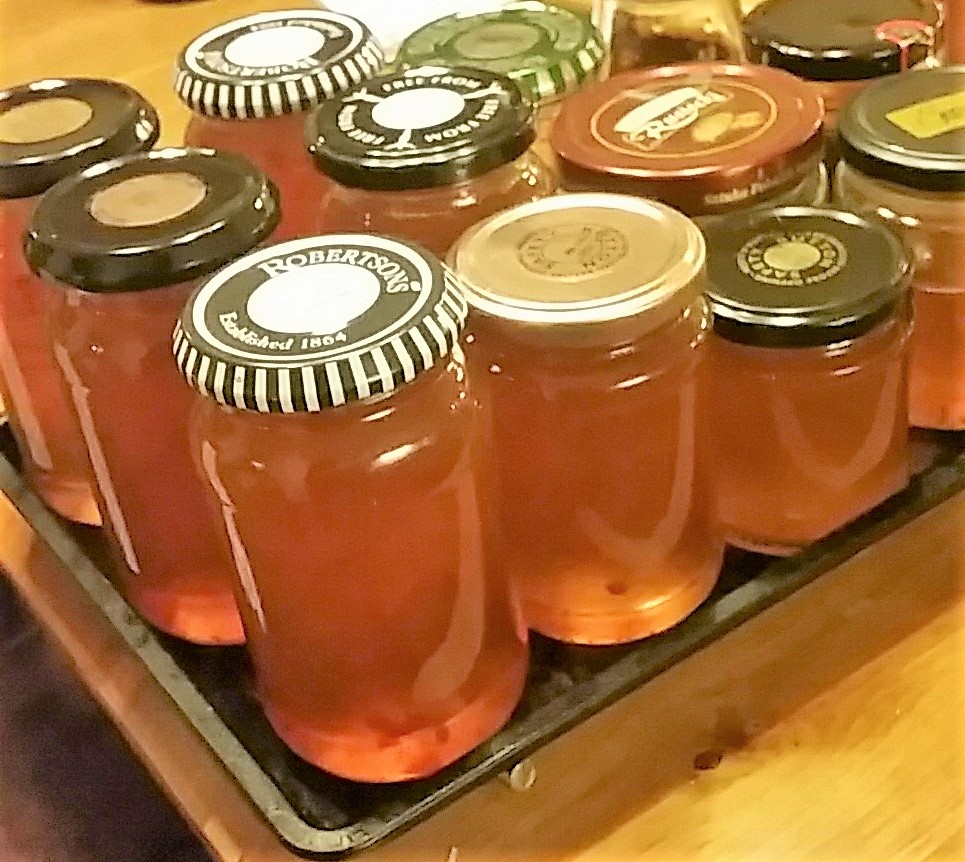We have just finished eating this, and it was tender and delicious. I think this is a version of a Spanish recipe, I have a note that one of my daughters copied it from Gordon Ramsey’s Healthy Appetite .
INGREDIENTS:
- 1 leg of lamb, around 2kg – part-boned if possible
- 1 tsp smoked paprika
- 1 tsp sweet paprika
- 1 tsp ground ginger
- salt and pepper
- Olive oil
- 4 cloves of garlic
- 2 oranges, sliced
- A sprig of thyme
METHOD:
- Heat the oven to 220 C
- Trim the joint of any superfluous fat. Mix the ginger, thyme and paprika with 1 tsp salt and a few good grinds from the pepper grinder, and rub this mixture all over the lamb, including the boned cavity, if it was boned.
- Fill the boned cavity with the garlic and half the orange slices. If the lamb is not boned, create a pocket in the meat, and fill that instead.
- Put the lamb on a rack in a pan, baste with olive oil, and put a bit of water in the bottom of the pan. Roast the lamb for 20 minutes in the hot oven, then replenish the water.
- Turn the heat down to 190 C and roast for a further 25 minutes per 500g. If the top of the lamb is getting a little dark during the cooking, cover with foil. Keep the water topped up as well, if it is in danger of becoming dry.
- For the last half hour, cover the lamb with the remaining slices of orange.At the end of the cooking time, transfer the lamb to a suitable platter for carving, and let it rest for 10 minutes. Carve thin slices and serve with potatoes and vegetables.
